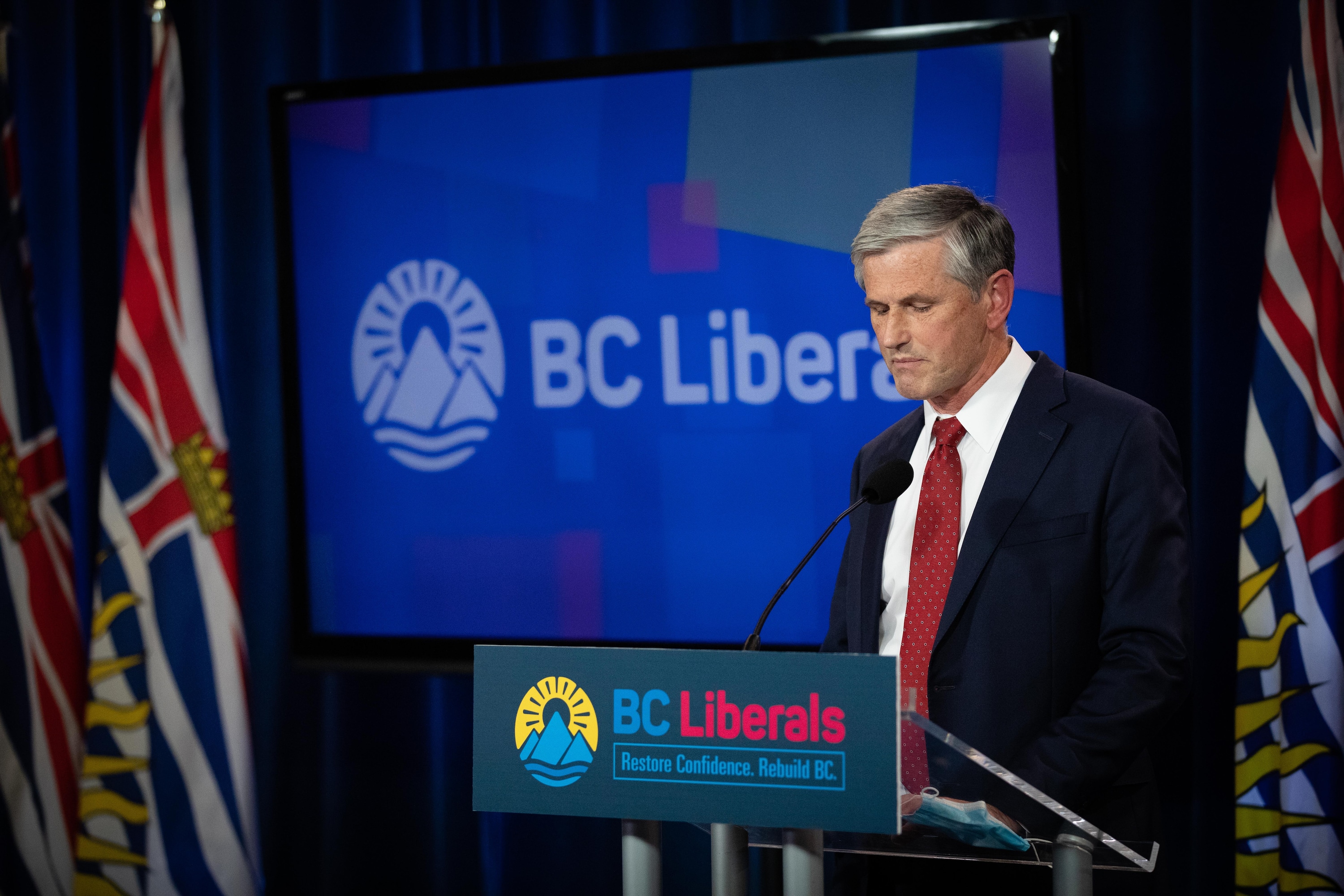Andrew Wilkinson spent a lot of the election campaign ensuring physical distancing by standing on top of trucks at small rallies, only to get rolled over when the votes were counted.

Andrew Wilkinson spent a lot of the election campaign compensating for physical distancing rules by standing on top of trucks at small rallies — only to get rolled over when the votes were counted.
“As the results stand tonight, the NDP are clearly ahead and it appears they will have the opportunity to form government,” he said, the closest he got to a concession on an election night in which the B.C. Liberals were reduced to their lowest seat total since the 1991 election.
“We don’t know what the final seat count will be. We owe it to every voter … to await the final result.”
While it’s true that we don’t know whether the Liberals will finish with 29 seats, 30 seats, or 28 seats, Wilkinson’s time as leader can probably be measured in hours or days rather than weeks or months.
In the middle of a pandemic in which voters were craving stability, and in a country where voters historically re-elect first term provincial governments 90 per cent of the time, he was always going to have a difficult task this election.
But it’s safe to say he didn’t do himself any favours.
WATCH | Andrew Wilkinson makes no mention of concession in election-night speech:

With his party projected to lose over a dozen seats, Andrew Wilkinson skipped a concession speech, saying he will wait until all mail-in ballot votes have been counted 1:25
Less than wacky election
The surface-level analysis of Wilkinson when he became leader of the B.C. Liberal Party in early 2018 was straightforward: He was an intelligent man who wouldn’t alienate any part of the “free-enterprise coalition,” but was also a slightly aloof and patrician figure who could have trouble personally connecting with voters who weren’t automatic Liberal supporters.
And time and time again, Wilkinson showed exactly that.
His comments on renting being a “wacky time of life” or describing domestic violence victims as “people who are in a tough marriage” resonated because they amplified the general impression many British Columbians already had of Wilkinson.
His repeated invocation of having gay and lesbian family members to defend candidates with anti-LGBTQ+ stances reinforced the sense he lacked a common touch.
His inability to immediately face the cameras for sexist comments made by candidate Jane Thornthwaite underlined the sense he couldn’t immediately tell when apologies were necessary.
And his past-the-11th-hour announcement that Laurie Throness had resigned as a Liberal member — after the Elections BC registration deadline, leaving Throness a Liberal on the ballot — left the feeling of a leader who didn’t have a clear sense of how he ultimately wanted to move his party forward.
Yes, Wilkinson was able to get in shots against the governing NDP in question period.
But every time he had an opportunity to give people the sense that their first impression of him was misguided, he didn’t.
WATCH | Wilkinson accepts the resignation of Laurie Throness:
Leader Andrew Wilkinson says the views of the former Chilliwack-Kent MLA around contraception do not align with the party, and that he accepts his resignation. 0:53
Decisions to come
So what comes next for the B.C. Liberals?
While they have their lowest seat count since 1991, they are still the official opposition party. The B.C. Conservative Party only got two per cent of the vote, and with electoral reform no longer on the table, the incentive for dissatisfied members to break away and create a more ideologically pure alternative will be diminished.
But the road ahead will be tough. Younger, urban supporters of the party are publicly demanding it renounce candidates and policies not seen as inclusive of the LGBTQ+ community. Others want the party to embrace an explicitly populist and conservative viewpoint, as other western centre-right parties have done to success in the last decade.
And now the party’s caucus has been significantly reduced, and is more white and male and featuring veterans of the Campbell and Clark administrations than was originally intended.
In other words, after a 2017 election in which they were a recount away in Courtenay-Comox from having a fifth straight term in government, the B.C. Liberals now have to give an honest assessment of what went wrong.
The only thing that seems certain is they will have four years to figure it out, with or without Andrew Wilkinson as leader.
